Gearing up and getting started
Starting any new sport can be daunting, but understanding the fundamentals can make the transition smoother. In the case of pickleball, having the right gear and comprehension of the rules is critical. Before you take that first swing, let's ensure you are equipped with the knowledge to wield your paddle with confidence, like a knight preparing for battle.
Understanding the basic rules and court layout
The essence of any sport lies in its rules, and pickleball is no exception. Familiarize yourself with essential terms, starting with the court layout. The court measures 20 feet wide and 44 feet long for doubles play, with a non-volley zone the kitchen extending 7 feet from the net on either side. This area is designed to heighten the challenge, requiring skilled placement and strategic thinking.
In addition to court dimensions, key rules include the double bounce rule, which states that the ball must bounce once on each side before players can volley. This rule encourages strategic play and rallies rather than aggressive smashing. Understanding how to serve is also crucial; all serves should be executed underhand, directed diagonally into the opponent's service box.
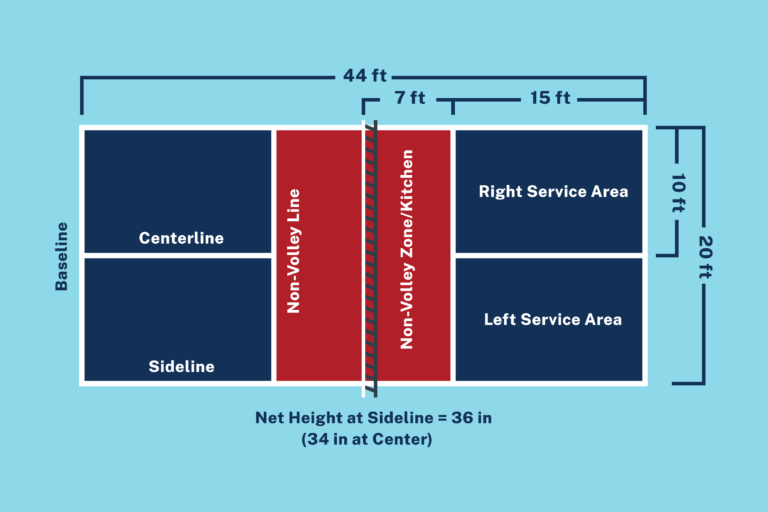
Choosing the right pickleball paddle
Choosing the right equipment is akin to a painter selecting their brushes; the right paddle can significantly impact your performance. As a beginner, opt for paddles that are lightweight, typically ranging from 6 to 8 ounces. This weight allows for better maneuverability without sacrificing power.
Paddle grip size is equally important; it should fit snugly in your hand without causing strain. Most manufacturers offer grip sizes ranging from 4 to 4 ¾ inches. Make sure to consider paddle materials, which can range from wood to composite or graphite. Each material offers unique advantages; for instance, composite paddles typically offer more power and control, while wood paddles are usually more affordable for beginners.
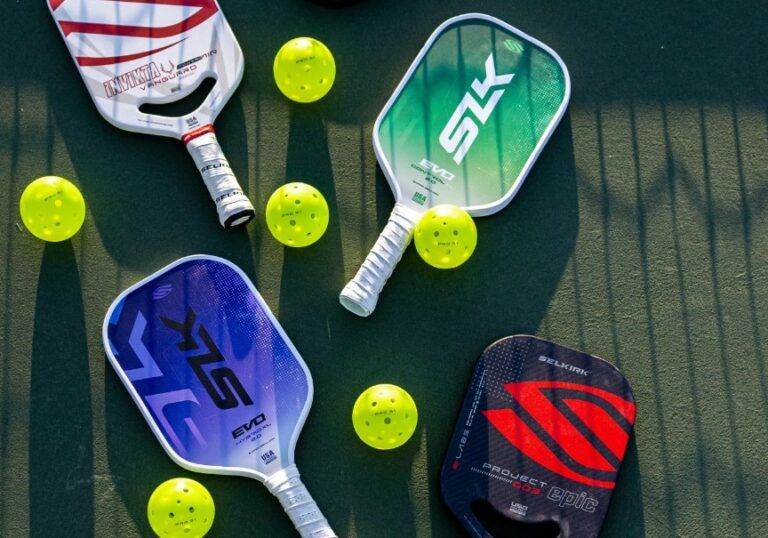
Finding pickleball courts and communities
The next step in your pickleball journey is finding places to play. Much like a traveler seeking a path through the forest, discovering local courts can open up numerous opportunities for practice and connection. Many local community centers, parks, and sports clubs now offer dedicated pickleball facilities, making it easier for you to join the action.
Engagement with fellow players is also vital. Seek out local pickleball clubs, online forums, or community events that welcome beginners. Joining a group not only allows for regular practice but also exposes you to players of varying skill levels, which can enhance your learning experience and skill development.
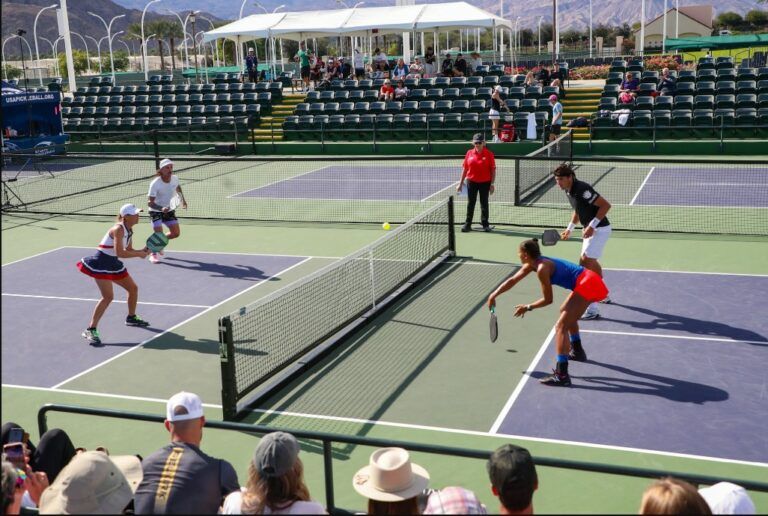
Mastering fundamental pickleball tips for beginners
Once you’re geared up and familiarized with the rules, it's time to dive into the heart of the sport: mastering fundamental techniques. The journey of a thousand miles begins with a single step, and in pickleball, that step is building your skill set the techniques you will continuously refine as you play.
Developing a consistent serve
The serve is your first opportunity to set the tone for each rally; think of it as the opening line of a captivating story. In pickleball, serving must be done underhand, imparting a sense of control and precision. Focus on developing a consistent serve by practicing different styles such as deep serves to the back of the court or serves with spin to keep your opponents guessing.
It’s essential to avoid faults during serving, as a missed serve means the loss of your turn. Instead of attempting flashy serves, concentrate on placement and reliability. Practicing regularly will fine-tune your mechanics and lead to a more dependable serve one that feels smoother over time, like a dancer gracefully gliding across the floor.
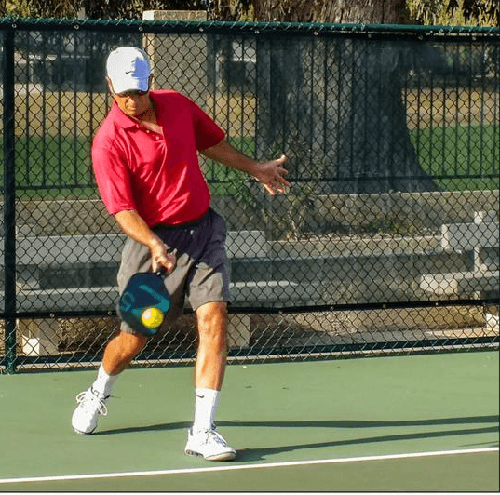
Returning serve with control
As important as serving is, returning serves presents its own unique set of challenges much like an athlete on the offensive end trying to thwart an opponent's attack. Proper positioning is key; aim to stand with your feet shoulder-width apart and knees slightly bent, ready to engage with any shot that comes your way.
Your ultimate goal should be to direct your return shot deep into the opponent’s court, which often puts them on the defensive. Practice using a variety of returns, including soft ones aimed at keeping the ball in play and aggressive deep returns meant to gain the advantage. Consistency is your best ally, ensuring that you maintain pressure on your opponents while minimizing unforced errors.
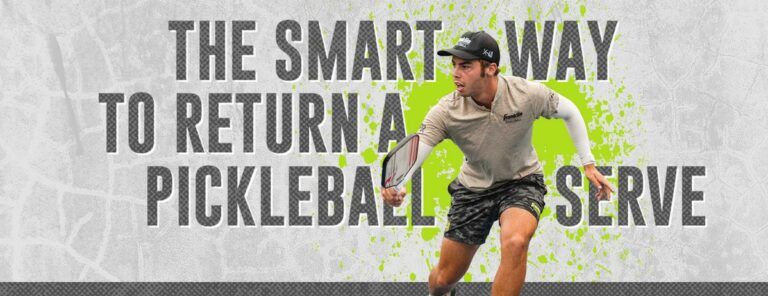
The art of the third shot drop
One pivotal skill in the pickleball arsenal is the third shot drop an art form that combines poise, precision, and strategy. After the initial serve and return, the third shot drop can help establish control over the net, allowing you to transition into a more aggressive position.
To execute this shot, focus on hitting a soft shot that lands in your opponent's kitchen. This technique forces them to allow the ball to bounce before initiating their return. Practicing this shot not only enhances your game strategy but also helps develop a more nuanced approach to offense and defense, giving you the opportunity to dominate rallies.
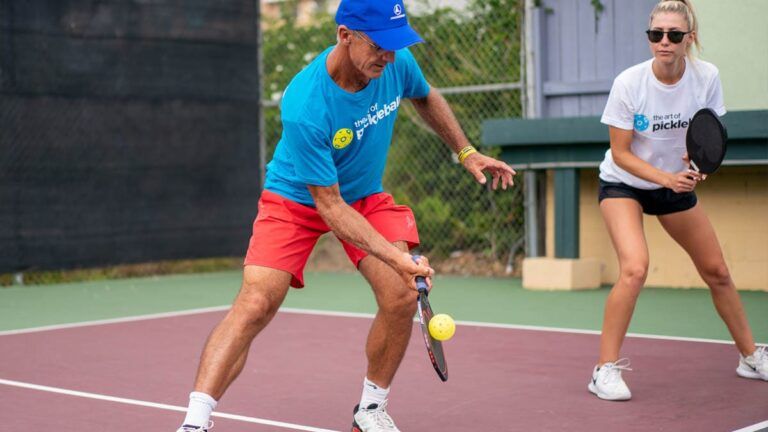
Strategic play and court positioning
With the foundational techniques under your belt, let's discuss strategic play and court positioning. A dynamic game is built on the interaction of well-timed movements, calculated strategies, and a keen understanding of your opponent's actions.
Understanding the non-volley zone
One essential area to master is the non-volley zone, or kitchen, which can be likened to the game of chess a battleground where strategic positioning dictates the game's outcome. Players must avoid hitting the ball out of the air while standing in this zone, making it a critical area for shot placement and control. Understanding how to effectively play the net while respecting the kitchen rules will keep you core-focused during rallies.
Crafting a strategy around your positioning can offer an advantage. For instance, moving closer to the net can give you the upper hand in an exchange where quick reflexes and dinking techniques play a central role.
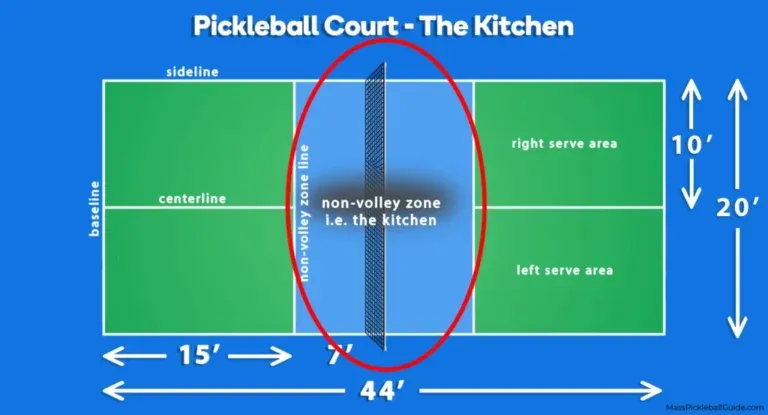
"Serve and stay" vs. "receive and run"
When it comes to doubles play, effective positioning can decide the victor. A common strategy is the "serve and stay" approach, where players advance to the kitchen line after serving, ready for the subsequent return. Alternatively, the "receive and run" approach entails positioning your partner near the net while you defend from the backline allowing for varied offensive and defensive tactics.
Being adaptable in your positioning can keep your opponents guessing about your plays. By practicing both strategies, you’ll cultivate a broader tactical repertoire that can be applied to various gameplay scenarios.
Shot selection: when to attack and when to defend
Understanding when to attack versus when to take a step back is crucial in pickleball, much like reading a book to grasp its underlying themes. Every moment presents an opportunity, so pay attention to your opponent’s movements and tendencies.
By analyzing their shot selection, you can anticipate their next move; this foresight will allow you to plan your attacks more effectively. For beginners, it's advantageous to emphasize placement over power, focusing on shots that gain control of the court while minimizing errors.
Elevating your game: doubles play
Doubles play introduces a new layer of complexity to pickleball, often transforming the court into an engaging dance of strategy and communication. In doubles, success relies heavily on teamwork and coordination think of it as a well-rehearsed duet.
Communication: the key to doubles success
In the world of pickleball, communication is vital in doubles play, akin to the harmonious notes of a duet. Before hitting the court, establish signals and strategies with your partner. Clear communication will help orchestrate offensive and defensive maneuvers, enabling you to avoid collisions and misinterpretations during intense rallies.
During gameplay, encourage dialogue share insights on shot selection, positioning, and responses to your opponents' tactics. Such collaboration not only fosters a stronger bond on the court, but it also leads to improved teamwork and overall performance.
Covering the court and avoiding collisions
Effective court coverage is essential in doubles play. Working together, partners should aim to anticipate each other's movements, orchestrating how to respond to opponents' shots while remaining mindful of not overcrowding.

To prevent collisions, establish mutual zones of responsibility. For example, if your partner is positioned close to the net, you may need to cover shots towards the backline until they resume their role. By strategizing your movements and allowing each other to shine, your doubles team can transform from mere acquaintances into a formidable partnership.
Developing winning doubles strategies
The best doubles teams often employ a range of strategies catered to capitalize on their individual strengths. Consider tactics like poaching, where one partner intercepts an opponent’s shot meant for the other player, or stacking, where players align themselves to maintain advantageous positions on the court.
Train regularly together to refine these tactics and develop the nuances that set your duo apart. Strategies can be adjusted based on your opponents, allowing your team to adapt quickly to various gameplay styles while maintaining cohesiveness.
Beyond the basics: footwork and movement
While technique is vital, footwork and movement are integral in executing your skills successfully. Much like a finely-tuned machine, seamless footwork can enhance your speed and agility on the court.
Footwork fundamentals for quick reactions
The foundation of effective footwork begins with a solid stance. Start by positioning yourself with feet shoulder-width apart and knees slightly bent, preparing for movement. Perform drills that emphasize quick lateral movements, such as shuttle runs or side-to-side dashes.
Incorporate a split step a quick jump that prepares you to spring in any direction. Practicing various footwork drills will enhance your agility, improving your capacity to respond to your opponents' shots swiftly.
Moving to the ball efficiently
Once you’ve honed your footwork fundamentals, turning your attention to court coverage is essential. Work on moving to the ball smoothly, keeping your body in line with the shot trajectory. Position yourself efficiently so that you can react to incoming shots with greater agility, ensuring that you aren't caught off guard during intense rallies.
To master this movement, practice drills that encourage lateral speed, allowing you to transition between offensive and defensive stances effortlessly.
Transitioning to the net like a pro
One critical moment in pickleball is transitioning to the net after executing the third shot drop. To do this effectively, practice quick footwork that allows you to move up quickly after your shot while maintaining balance. This positioning can change the dynamics of the game, giving you an opportunity to engage in volley exchanges that can shift the flow of play in your favor.
Avoiding common beginner pitfalls
As you grow in skills and confidence, it’s essential to recognize and avoid common beginner pitfalls. Much like navigating through a maze, understanding potential obstacles can help guide your growth.
The perils of overhitting
One of the most prevalent mistakes beginners make is overhitting. In the desire to show power or impress others, players often lose control of their shots, leading to frequent errors and frustrating points lost. Focus on controlling power by emphasizing placement and shot accuracy.
Instead of attempting powerful shots, practice consistent placements that keep the ball in play. By mastering this art of finesse, you’ll find success without unnecessary risks or unforced errors.
Taming the wrist: achieving control
Another common issue is the lack of control stemming from improper wrist movement. Beginners often express their frustration when shots go astray due to excessive wrist action. To maintain paddle control, develop a consistent grip and practice proper wrist positioning throughout your shots.
Start with drills that promote focus on the paddle face rather than wild wrist movements, ensuring a sound technique that will lead to better accuracy.
Conquering the backhand
Many players tend to struggle with the backhand shot, causing them to shy away from using it during matches. A sound strategy involves practicing your backhand consistently, employing drills that emphasize positioning and accuracy.
Consider exploring both one-handed and two-handed backhand techniques to discover the approach that feels most comfortable. Remember, honing this essential skill can lead to powerful, strategic shots that catch your opponents off guard.
The mental game: unlocking your potential
As integral as physical skills are, the mental game plays a significant role in achieving success on the court. It’s this mental resilience that can often set elite players apart from the rest.
Cultivating a positive mindset
Establishing a positive mindset can be integral to your pickleball performance. Much like an artist creating a masterpiece, your outlook can either enhance or undermine your progress. Focus on celebrating small victories and learning from mistakes rather than fixating on defeats.
Encourage yourself to maintain patience throughout your learning process, reinforcing the notion that improvement occurs through practice and persistence. This attitude will not only enhance your gameplay but will also make the experience enjoyable.
Developing laser-like focus
To reach peak performance, developing concentration is vital in high-pressure situations. Minimize distractions and cultivate routines that help you prepare mentally before each game.
Engaging in breathing exercises or visualization techniques can sharpen your focus, ensuring that you remain present during every point and rally. By practicing the art of concentration, you’ll develop the mental toughness necessary to navigate the challenges of any matchup.
The power of visualization
Visualization is a powerful technique embraced by many professional athletes, allowing them to mentally rehearse their skills and tactics. Picture yourself successfully executing specific shots, winning points, and responding gracefully to your opponent's plays.
This practice amplifies confidence, allowing you to perform at your best, much like a musician rehearsing for a big concert. The cultivation of a vivid mental picture may translate into enhanced performance during actual gameplay.
Pickleball etiquette and sportsmanship
As you delve into the competitive world of pickleball, the importance of sportsmanship and etiquette cannot be overlooked. Upholding a respectful and supportive environment enhances the experience for everyone involved.
Respecting the rules and your opponents
Engaging in fair play fosters goodwill among players, creating a competitive yet friendly atmosphere. By following the rules diligently, such as calling your own lines and being honest about faults, you contribute to a positive environment.
Remember, respect extends beyond technicalities; it’s essential to appreciate the skills of your opponents while promoting an atmosphere of camaraderie on the court.
Creating a positive and encouraging atmosphere
Uplifting fellow players with supportive remarks can work wonders for morale. Cheer on your partner and others regardless of the score. This encouragement transforms the competitive spirit into an enjoyable social experience that keeps all players motivated to improve.
By fostering a positive atmosphere, you’ll not only enhance your own experience but contribute to a vibrant pickleball community.
Resources for continued growth
Continuous improvement is a cornerstone of any athlete’s journey. Exploring resources that promote growth can be likened to a treasure map guiding you toward success.
USA Pickleball: your go-to resource
The USA Pickleball Association serves as a vital resource, offering official rules, tournament information, player rankings, and instructional materials. Their site provides a wealth of knowledge that can aid you on your journey to mastering the sport.
Utilize these resources to refine your understanding of the game and network with fellow players. Tournament participation is also a great way to assess your progress and experience the excitement of competitive play.
Explore pickleball videos and channels
In the digital age, numerous platforms provide instructional videos and tutorials: a treasure trove for newcomers eager to learn. Consider following channels that specialize in pickleball techniques, strategies, and professional matches.
These videos allow you to observe the strategies and skills that high-level players employ, offering insights you can incorporate into your own practice. Learning from those who have walked the path can provide motivation and inspiration.
Connect with local clubs and players
Building relationships within the pickleball community can significantly enhance your journey. Local clubs often host lessons, social games, and tournaments, facilitating opportunities for practice and connections with fellow enthusiasts.
Don’t hesitate to reach out and get involved; the bonds formed while playing pickleball can lead to lifelong friendships and invaluable experiences.
In conclusion, the journey through the exhilarating world of pickleball holds boundless potential for beginners. By embracing the essential tips outlined in this guide from mastering foundational techniques to cultivating a positive mindset you'll lay the groundwork for becoming a skilled and confident player. Remember that every game is an opportunity for growth, filled with valuable lessons, camaraderie, and immeasurable joy. Now, step onto the court, paddle in hand, and begin your exciting adventure in pickleball!










